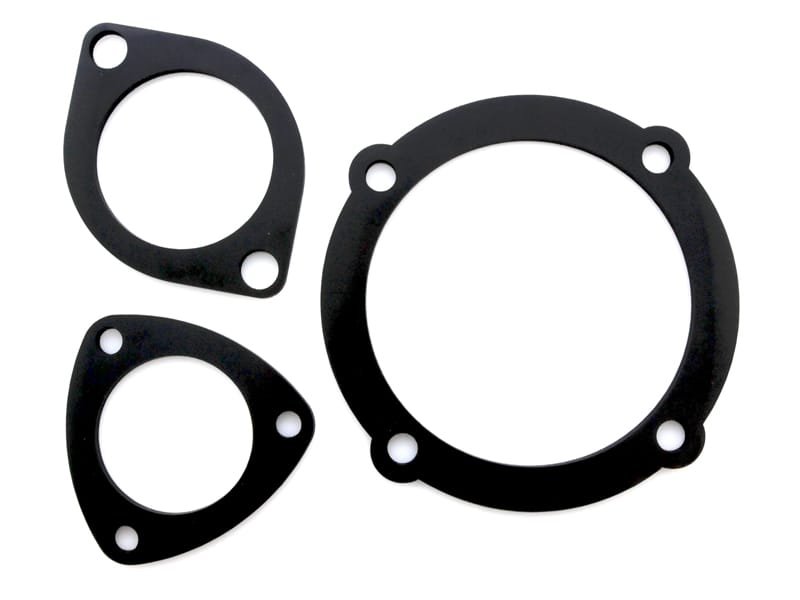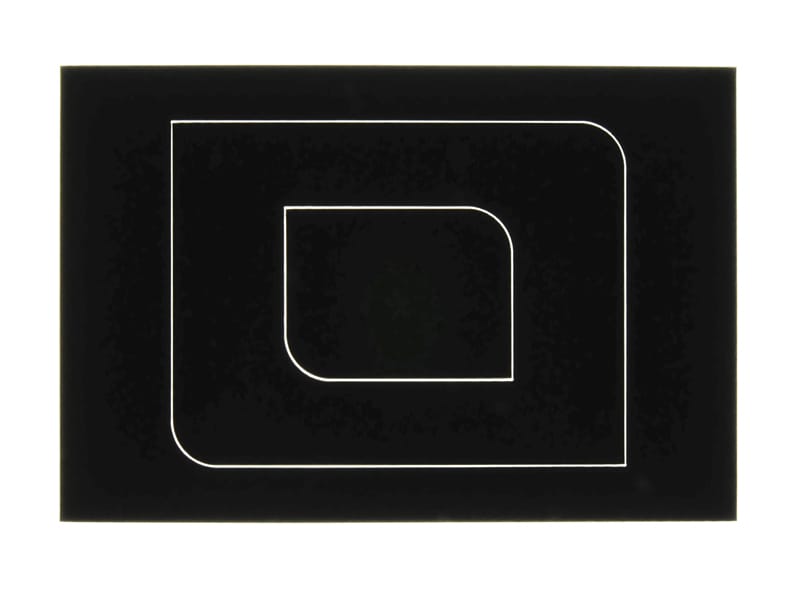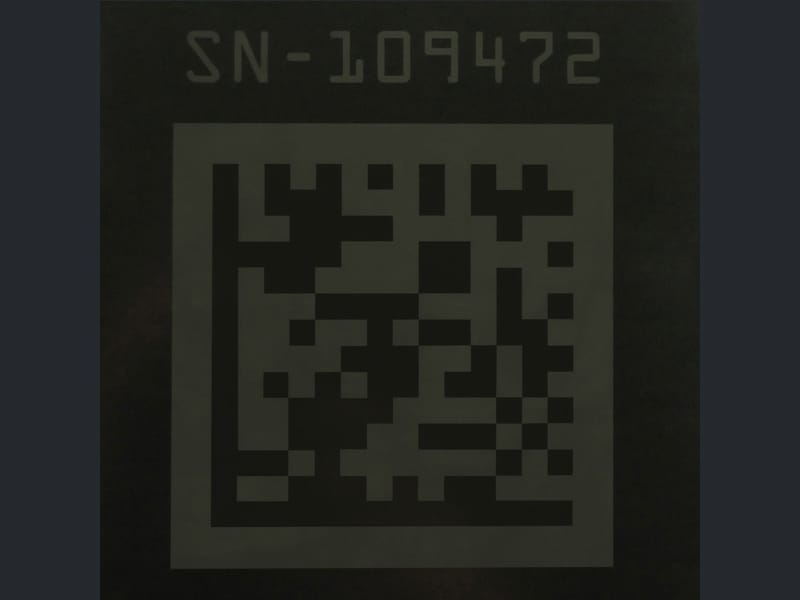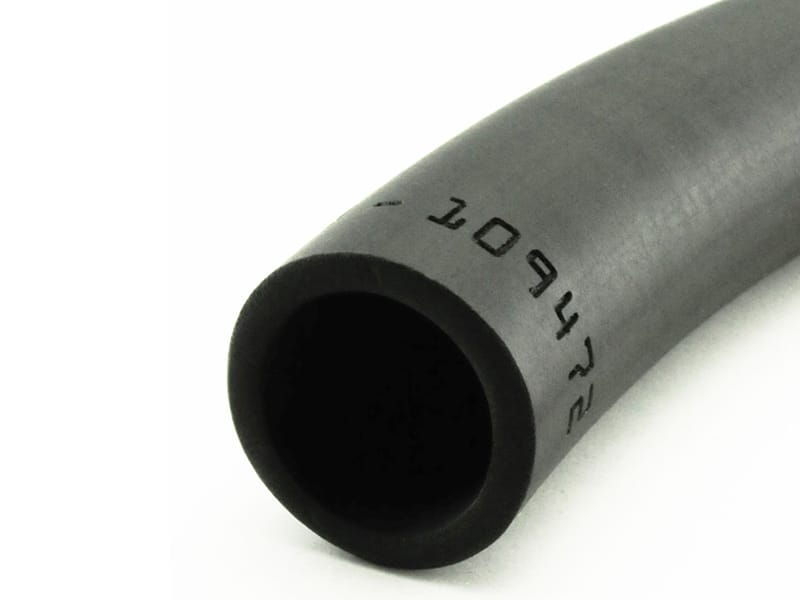Processing Viton® Fluroelastomer Using DLMP®
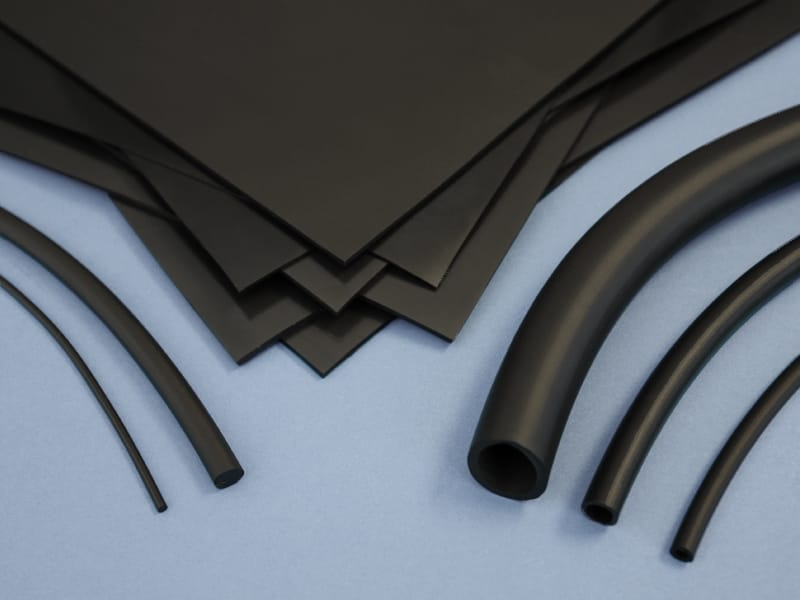
Related Names: |
FKM®, Fluoroelastomer, Tecnoflon® |
Chemical Names: |
N/A – Chemistry depends on grade of FKM |
Manufacturers: |
DuPont™ |
Viton® is a class of thermoset fluoroelastomers developed by DuPont™ Performance Elastomers. Viton resins are comprised of two or more fluoropolymers. In all, there are four basic families of Viton:
1. Viton® A - copolymer of hexafluoropropylene (HFP) and vinylidene fluoride (VDF or VF2)
2. Viton® B - terpolymer of HFP, VF2, and tetrafluoroethylene (TFE)
3. Viton® F - terpolymer of HFP, VF2, and TFE
4. Specialty Grades, including GLT, ETP, and GFLT - typically includes some combination of ethylene, TFE, and perfluoromethylvinyl ether (PMVE) for enhanced chemical resistance
Viton is most noted for its resistance to elevated temperatures, chemicals, atmospheric oxidation and sun exposure. Due to these properties, Viton is suited for demanding uses in aerospace, automotive, chemical and hydraulic applications. Viton is available in sheet, tube and cord form and is black in color.
Viton® and DLMP® Technology
The material properties of Viton, primarily heat and oxidation resistance, make it highly compatible with DLMP® (Digital Laser Material Processing) technology. The influence of these properties on the results of DLMP is discussed in detail in the following sections.
The effects of laser energy interaction with Viton are material ablation and material modification. The diagram below illustrates the effects and processes possible based on the unique interactions between laser energy and Viton. In the case of Viton, the process of laser cutting, laser engraving and laser marking can be applied. The laser energy can ablate material to cut, engrave or mark the material, or it can change the surface properties to create a visible mark. Each of these processes are discussed in their respective section below.
For more information see our Laser Material Processing Whitepaper.
Ablation of Material
Viton is an excellent absorber of CO2 laser energy (wavelength=10.6 μm). When Viton absorbs laser energy, it rapidly converts optical energy into molecular vibrations (heat). With sufficient heat, Viton undergoes thermal degradation, where the molecular bonds are broken at various points in its molecular structure. Material directly in the laser path is ablated away, creating vapor and a fine black powder. CO2 lasers are used exclusively for laser ablation of Viton.
The material just outside of the laser's focus point or path will conduct some heat, but not enough for complete and thorough ablation. This area is often referred to as the heat affected zone or HAZ. In the case of Viton, virtually no HAZ is created because Viton possesses a high degradation temperature; adjacent surfaces can withstand conducted heat without deformation. As discussed in the DLMP overview, heat effects can be minimized by selecting an appropriate power for a given thickness of material.
Modification of Material Properties
As discussed, 10.6 μm CO2 lasers are very useful for material removal for the purposes of cutting and engraving. However, CO2 lasers are ineffective at creating contrast. Fiber lasers are better suited for this task. Viton will also absorb 1.06 μm fiber laser energy and convert it into heat. The power applied to the surface can be tightly controlled to create contrast without material removal. The resulting mark will be light brown. This process, sometimes referred to as bleaching or foaming, leaves no residue or powder.
Laser Marking (Surface)
Viton can be surface marked with a fiber laser to convey information, such as numbers, text, barcodes, and even photographs. The mark is permanent and exhibits good contrast, making it an attractive alternative to inking methods. While not a particularly bright mark, this process is sufficient for creating human and machine readable information.
Combined Processes
Multiple processes can be applied to Viton without having to move or re-fixture the material. The example demonstrates how processes can be combined to cut Viton from sheet stock, engrave a channel into the material, and surface mark a serial number. Engraving and marking are typically done before cutting in a combined process.
Environmental, Health and Safety Considerations
Laser material interactions almost always create gaseous effluent and/or particulate. Due to its complex polymer chemistry, laser processing of Viton using a CO2 laser produces a wide array of fluorine containing gasses. Most notably, this effluent contains carbonyl fluoride and hydrogen fluoride. These gases and particulate should be routed to an exterior environment in accordance with government regulations. Alternatively, the effluent can be treated with a filtration system first and then routed to an exterior environment. Viton is resistant to high temperatures but can undergo exothermic reactions if provided with enough laser energy. Therefore, laser processing of Viton should always be supervised.

